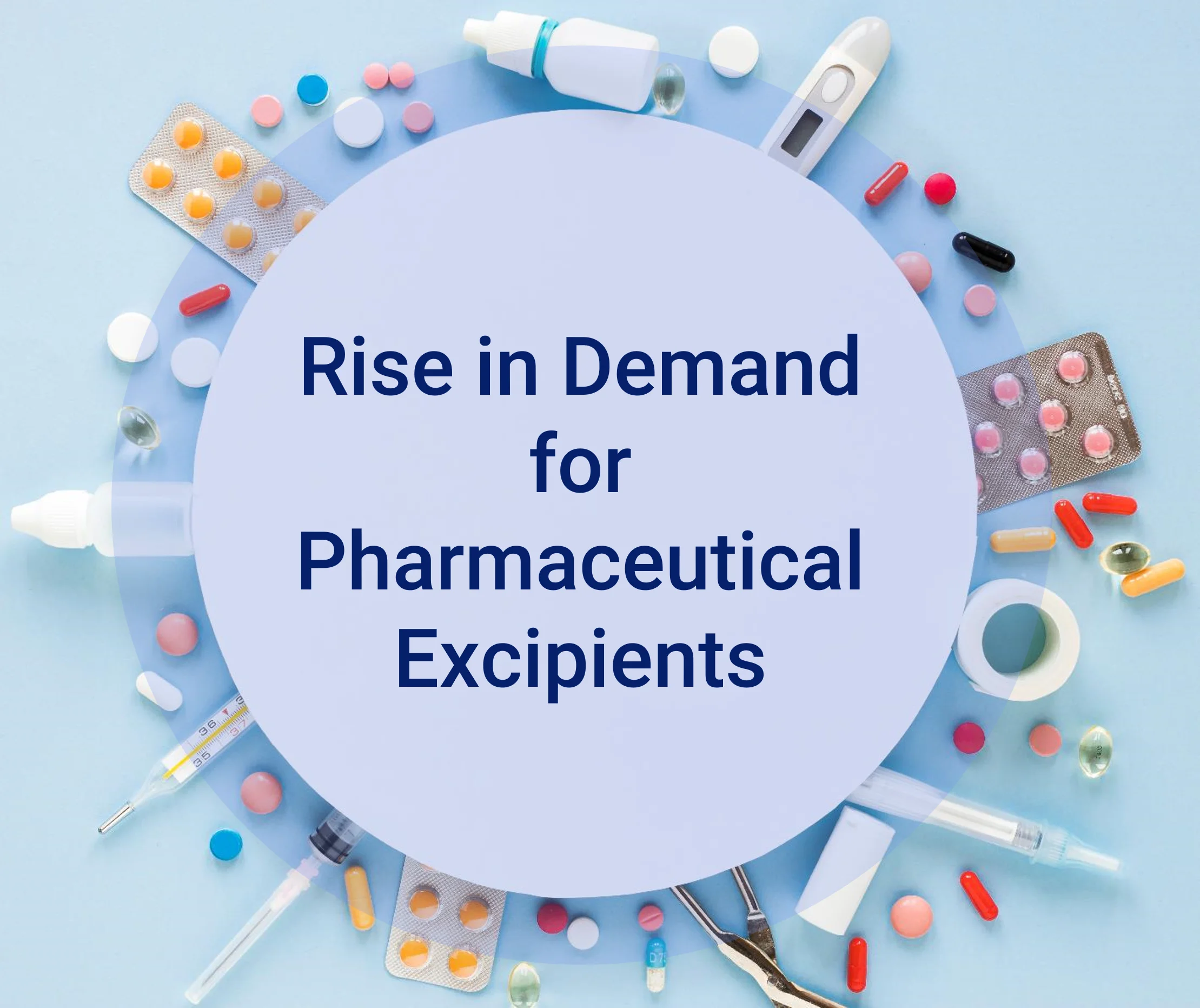
Blog
17th December 2020
Pharmaceutical excipients are those compounds other than the prodrug, which comprises in the manufacturing process or are present in a finished pharmaceutical product dosage form. Excipients are fundamental components of pharmaceutical drug products as they act as active ingredients of a medication, stability enhancers, emulsifying and suspending agents, binders, preservatives, antioxidants, lubricants, etc.
With the rise in the Global Pharma Industry due to the increasing demand for generic drugs, excipients are bound to share the light. Also, there has been a steep hike in chronic as well as acute diseases. For instance, United States includes excipients in numerous vaccines, such as DTaP-HepB-IPV (Pediarix) vaccine, which contains formaldehyde, aluminum hydroxide, aluminum phosphate, sodium chloride, polysorbate 80, neomycin sulfate, polymyxin B, and yeast protein. Moreover, the rise in pharma excipients market likely attribute to the Biopharmaceutical sector, which has shown a lot of promise. Furthermore, the ongoing COVID-19 pandemic is expected to produce a boom for the pharmaceutical industry leading to a rise in demand for excipients. However, the cost, time-intensive drug development process, and rising regulatory strictness may act as restraints for the market growth. Furthermore, the limiting factors of current excipients have paved the way for new excipients. For example, during wet granulation, increasing the amount of water, a longer massing time, and a higher mixer speed tend to reduce the compact of microcrystalline cellulose (MCC).
The world pharmaceutical functional and multifunctional excipients market was valued at 8,076.4 million USD in 2018 and are likely to increase by over 2,000 million USD by 2023, reaching 10,533.4 million USD. For instance, Cambrex Corporation recently announced the 12,000-liter reactor's installation, along with the replacement of centrifuges with new, part of a 3 million USD investment to upgrade and improve the efficiency of the plant manufactures intermediates and generic APIs under GMP conditions.
Natural excipient development is gaining a lot of attention these days because it is cheap, safe, and acceptable to patients. National and International excipient market is developing day by day, which suggests a need to look at natural excipient development in terms of safety, acceptability, and the economics involved with it. It is approximated that the world market for plant-derived drugs may account for about 2,00,000 crores with Indian contribution to be nearly 2000 crores.
Europe accounts for the largest division of the market, whereas the Asia Pacific is the fastest-growing market. The maximum share of this region can be attributed to several pharmaceutical giants with large production capacities leading to high consumption of excipients. However, the Asia Pacific region is expected to be the fastest-growing market. The factors driving the growth of this region can be attributed to the increase in outsourcing of drug manufacturing to specialized contract manufacturing organizations (CMOS), rising number of companies setting up manufacturing units, favorable government regulations, low labor, and manufacturing costs, whereas the broad base for the generation of generics & biologics.